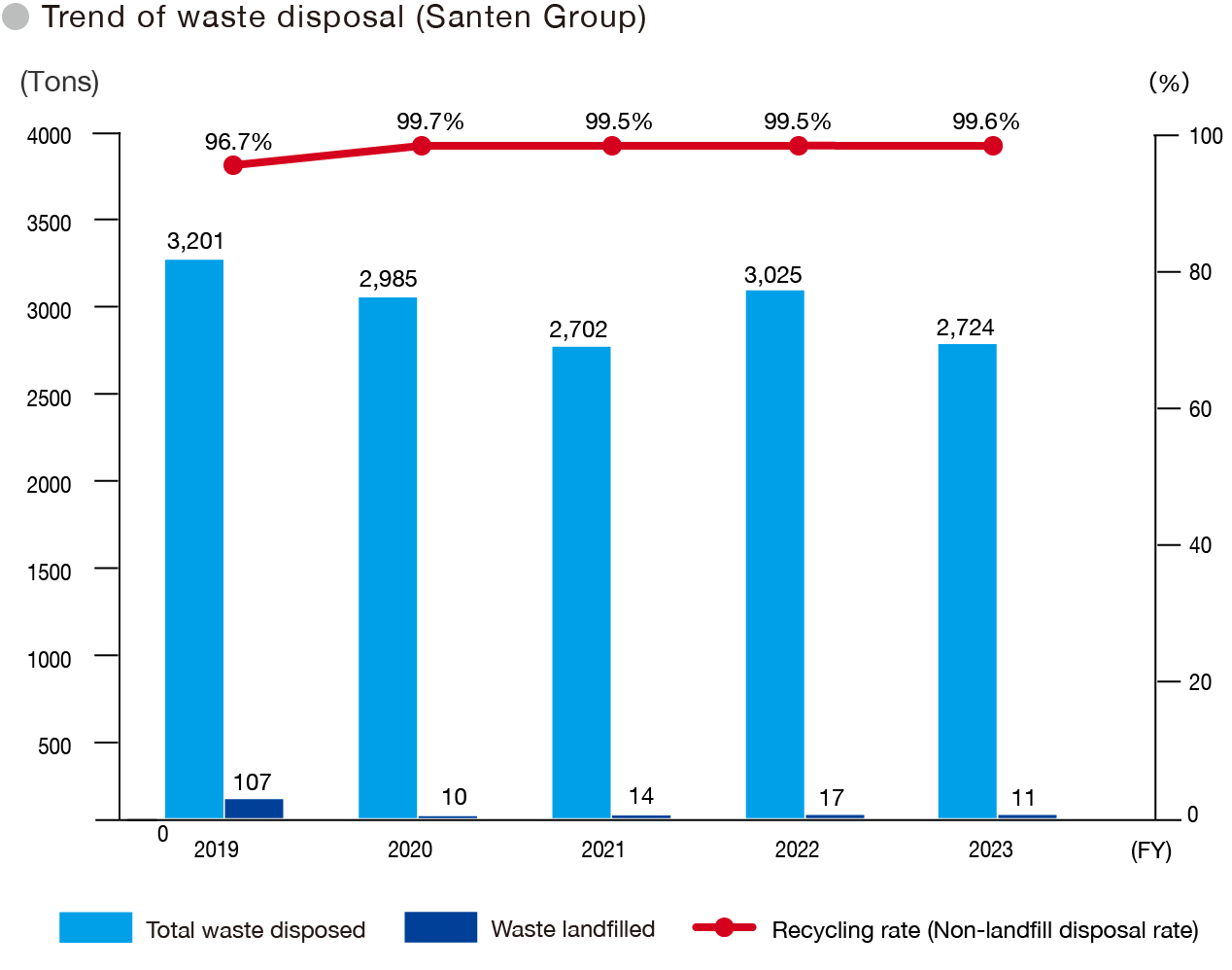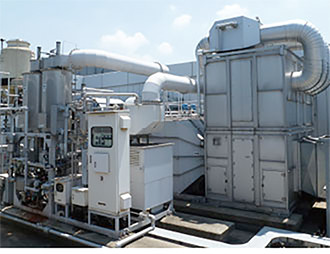Santen seeks to provide appropriate control of chemical substances at every operational site that handles chemical substances.
In Japan, based on the Law concerning Pollutant Release and Transfer Register (hereinafter, "PRTR") and the Industrial Safety and Health Act, we appropriately manage and register the amount of release into the air as well as the amount of transfer to the outside of the operational site according to the PRTR.
Furthermore, we introduced a "system for controlling chemical substances" to provide centralized control of the amount released and stored and the location of storage, as well as to appropriately purchase and use chemical substances. In order to reduce the release of chemical substances into the air as well as to decrease the impact on the environment, we installed an instrument to recover organic solvents, and ensure that the performance of the instrument is maintained through inspection and maintenance of the instrument.


